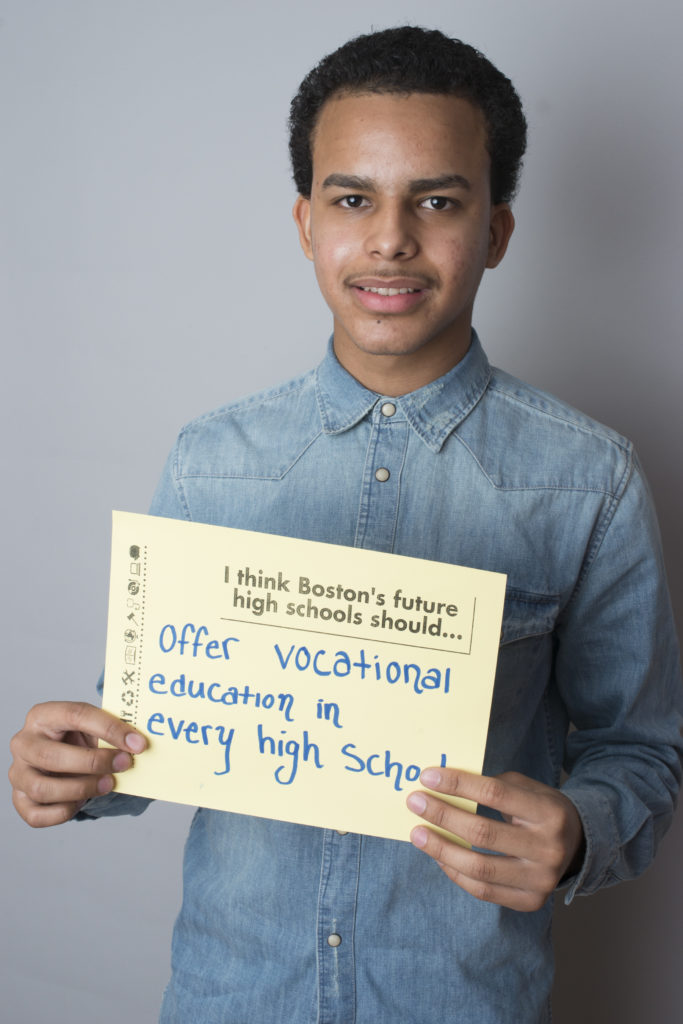
By Javier Antonio Suárez González
Our school system needs to adapt to realities of the twenty-first century. Many students nowadays don’t want to go to college when they graduate from high school. Some students just want to graduate, get a job, and make money. Meanwhile, high schools are designed to prepare students to go to college. They are not preparing students to get along in the real world.
Let’s face it. Traditional high schools are not for everyone and some students barely make it out with a diploma. How can we update our current school system in a way that will benefit all students of the future? By providing exposure to real-world jobs, students will be more engaged in classes of their interest. Field work and internships will help students find an interest in their future that will not only benefit them, but will also benefit the community. By integrating vocational and career classes in our current high school curriculum, we will provide the tools to help all types of students succeed in their future, no matter where it leads.
The vocational and career education will help students be prepared for the real world by providing a broad experience that will help them determine the area of specialty they want to focus on for their future. For example, Justin Meeks from Southeastern High School learned the trade of fabricating metal through an internship set up by the school, which then became a full-time job when he graduated[1]. Incorporating these classes into our current high school system will help maintain student engagement, help reduce dropout rates, and increase attendance. Knowing what field of specialty students want to do in their future will help them in college because they will be less likely to switch majors and take on new loans.
Some arguments that oppose vocational education include the fact that vocational education was created for work-bound students—meaning either students of color or students in some way not suited for college. Vocational school opponents say they are inferior places where they send kids who have behavioral problems or learning disabilities.[2] Specifically, the SAT scores of these schools don’t get better, they are either average or lower than state scores. In the opinion of some, we are trapping students into what will become their life’s work at an early age.
But these statements do not show the whole truth. Vocational education helps to improve the lack of interest in students that leads them to drop out.[3] Some students might be right to go straight to work! All students that go to vocational school want economic security.
The main focus of high schools is to lead students to college and a successful future. Even though this is the hope, it does not always end that way, some students enter college and don’t finish, and end up worse than how they started, with debt.[4] For the students graduating with a vocational degree, they can start work soon after high school and can start contributing to their local economy. They will not only better their lives but also the lives of those around them. Money is the center of our society, so let’s help create that bridge.
In order to really prepare the students for the real world we must make an effort to incorporate vocational education in our high schools. Having these courses available in every high school will help those students who are not college-bound to be successful in life. These courses will also help create a better economy for all of us.
- “Should More Kids Skip College for Workforce Training?” PBS NewsHour, January 26, 2016, http://www.pbs.org/newshour/bb/should-more-kids-skip-college-for-workforce-training/. ↑
- Ibid. ↑
- James J. “Career Academies: Impacts on Students’ Performance in High School.” Career Academies: Impacts on Students’ Engagement and Performance in High School., 2000-Mar. Accessed November 18, 2015. http://eric.ed.gov/?id=ED441075. ↑
- “Should More Kids Skip College for Workforce Training?” January 26, 2016. ↑
You must be logged in to post a comment.